Welcome to my new favourite room in the house. The big shed is officially up! I moved in a heap of gear straight away, and I have been using this space for a few months now. Today I’d like to take you inside to walk through the layout, chat about future plans and answer one pretty big question: Can I run this entire workshop off-grid?
So can I run this mega workshop off-grid? Short answer, maybe. Long answer, keep reading…
Workshop Size and Layout
The internal footprint of this workshop is just shy of 10 metres wide by 15 metres long. In simple terms, it’s three 5 metre bays in a row. I designed each bay to have a slightly different purpose.
Bay One
A full drive-through section with a roller door at both ends. This is future-proofing for big toys. If a caravan or boat ever appears in my life, this is where it will live. For now, it is perfect for easy access with the tractor, mower, and trailer.
Bay Two
This will be my main working zone. The plan is to build a long workbench across the back wall with an L shaped section of racking and tool storage. The racking that is already in here is full, which tells you everything you need to know about how much gear we have.
Bay Three
This one is special. It’s going to house a mezzanine, offices, and a cleaner work zone. More on that in a second.

Why Is It So Tall?
The most asked question I get is: why is it so tall? I designed it that way in order to achieve certain functionality within the shed, but I must admit, I didn’t fully appreciate how big it would look/feel in real life.
The workshop walls are 4.8 metres high at the gutter with a 30-degree roof pitch. That gives you around 7.8 metres to the peak. The reason for this height was to accommodate a generous mezzanine – Lucy was also keen to have a centre pitch roofline to complement our existing home’s exterior structure.
For the dual level zone, I wanted a comfortable 2.4 metre ceiling height under the mezzanine and then doubled that to give myself room above. The result is a double-height workshop that feels huge inside, but also gives us the flexibility to add rooms upstairs without feeling cramped.
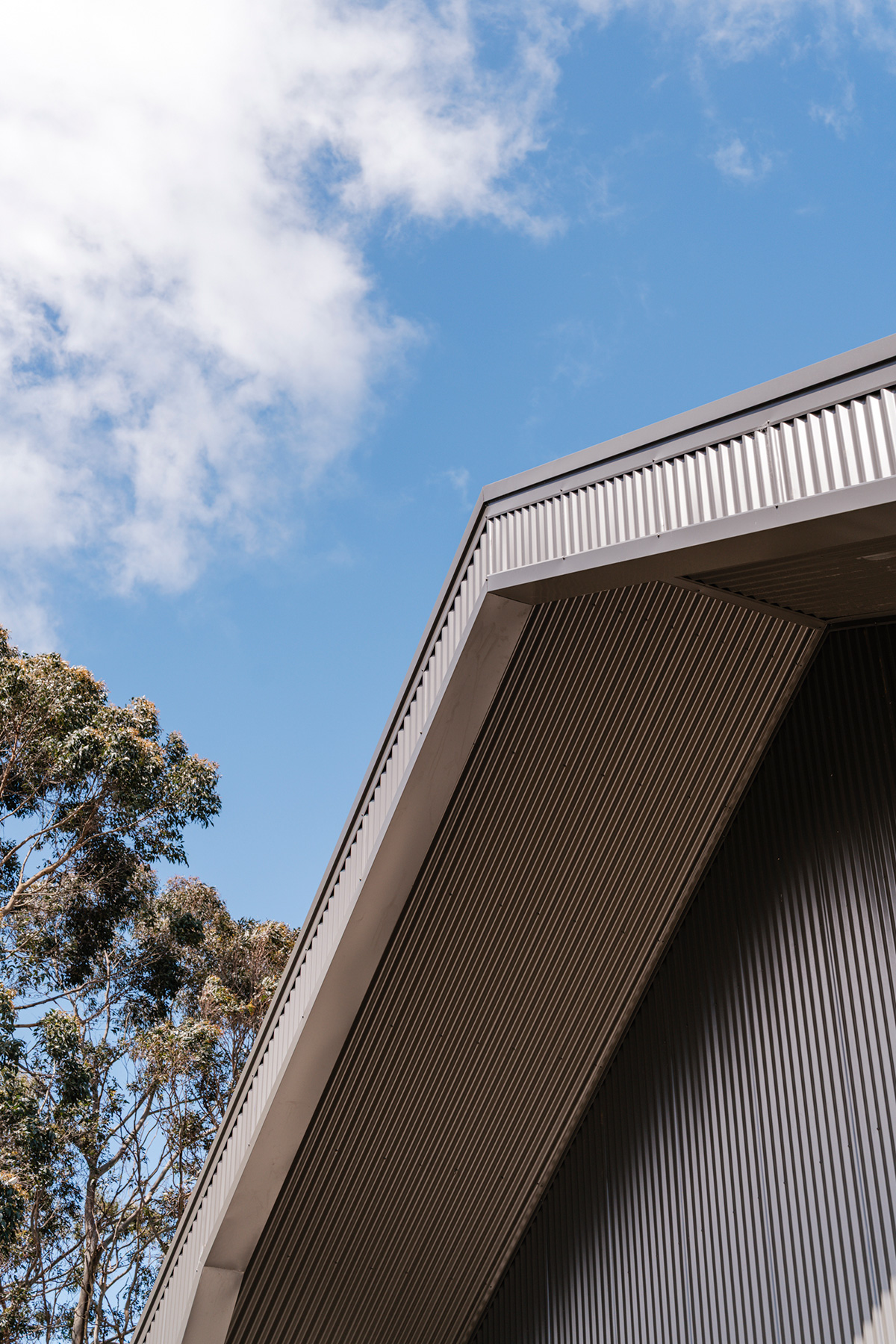
Future Mezzanine and Office Plans
The plan:
- A staircase starting near the front, turning and heading up along the wall
- A hallway at the top with doors into separate rooms
- One room for my office and editing space
- One room for Lucy, a dedicated design studio for samples, mood boards, and filming
Both rooms will be completely clean, dry spaces separate from the main workshop chaos. Upstairs there will also be extra storage and possibly something fun down the track. We have not locked that part in yet, but there is plenty of room to play.
Structure and Steel
The structure is serious. West Vic Sheds built this to lock up stage and went above and beyond on detail.
The main columns are 400mm wide and doubled up. These run right through the roof trusses with five on each side. It is a heavy-duty frame designed to handle wind, weight, and everything we want to throw at it in the future.
At lock up, there was no power, no lights, and no services. Just an enormous empty shell ready to be fitted out.
Planning Power From the Start
Even before the shed went up, I started planning for power.
I trenched and ran four conduits under the slab:
- Two conduits back to the house main board
- Two conduits across to the existing garage
This gives us options for future power, solar, and battery systems. At the moment there is a temporary board installed with a few lighting circuits and a couple of power circuits just to get things running.
Behind a panel on the wall, all those conduits come up out of the ground, then run across the ceiling to feed lights, power points, and roller doors. It is not finished yet, but it is enough to get us started.
 Off Grid Power: EcoFlow Delta Pro 3
Off Grid Power: EcoFlow Delta Pro 3
There is still no mains power connected directly to this building. To solve that, we installed a transfer switch that allows the shed to be powered from either mains or an alternative source.
Instead of a noisy petrol generator, I have been testing something a lot more interesting.
EcoFlow reached out with their new Delta Pro 3 system, a 4 kilowatt hour battery with two additional 4 kilowatt hour expansion batteries on top, for a total of 12 kilowatt hours.
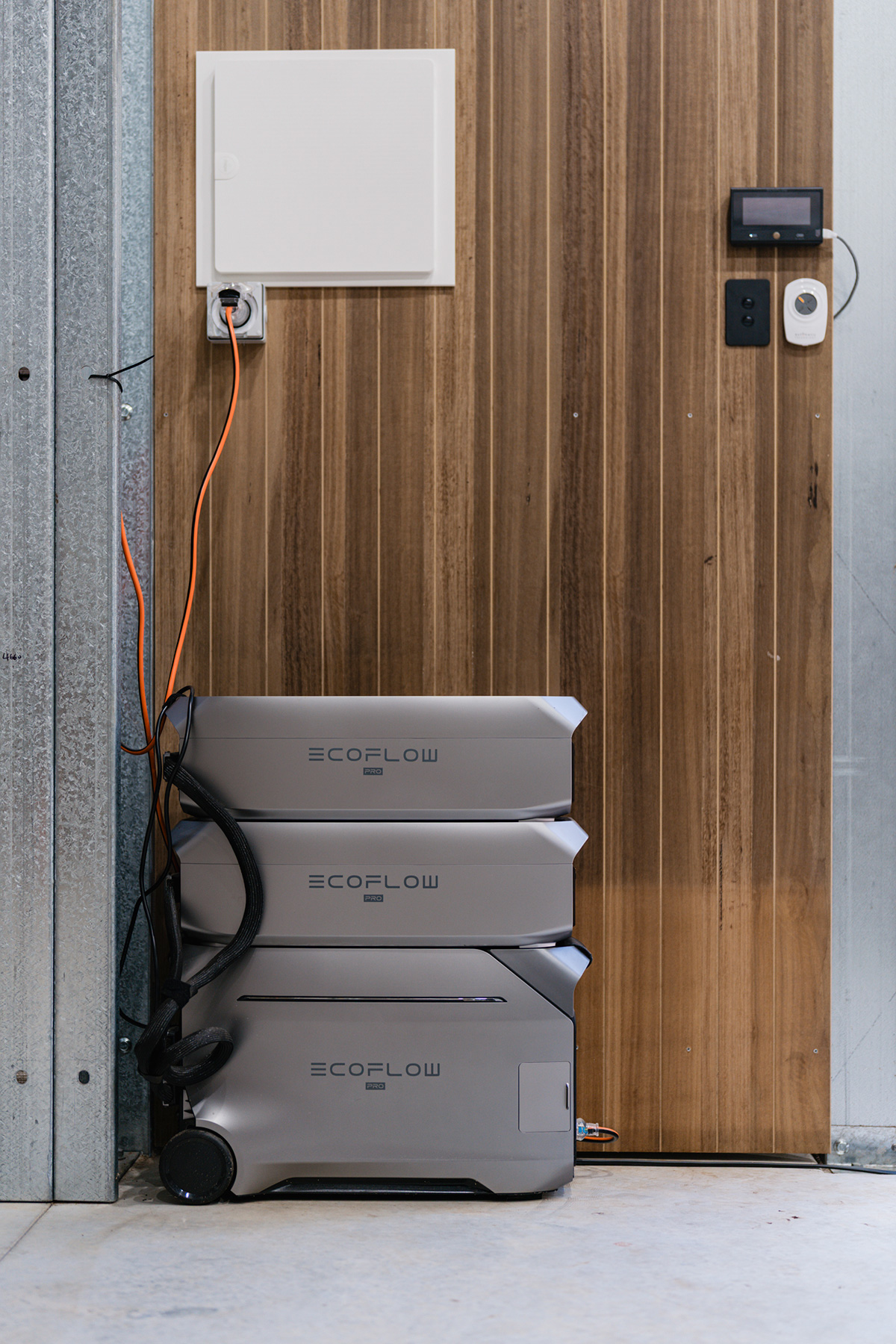 Before this, I was running an extension lead from the small garage outside, manually plugging in lights and tools. It was a pain. Now everything in the shed runs through the EcoFlow into the transfer switch.
Before this, I was running an extension lead from the small garage outside, manually plugging in lights and tools. It was a pain. Now everything in the shed runs through the EcoFlow into the transfer switch.
The battery gives live readouts on the screen and through the app, showing exactly how much power is being drawn and how long it will last. With the high bay LED lights on, roller doors active, some speakers, and chargers running, it pulls around 900 to 1,000 watts. The battery can run the workshop for two to three days like this without a recharge.
The big challenge is keeping it charged.
 Can It Really Power a Whole Workshop?
Can It Really Power a Whole Workshop?
Short answer, yes. At least for the way I work right now.
I have had welders, drop saws, table saws, the computer, speakers, lights, and chargers all running off this battery system and I still have not hit its limit. Older portable power units I have used would tap out when any serious power tools were plugged in. This one has not.
The goal is simple. If this system can reliably power everything I need out here, I want to permanently install it and run the workshop as an off grid building using solar only. To do that, I needed to sort out the solar input.
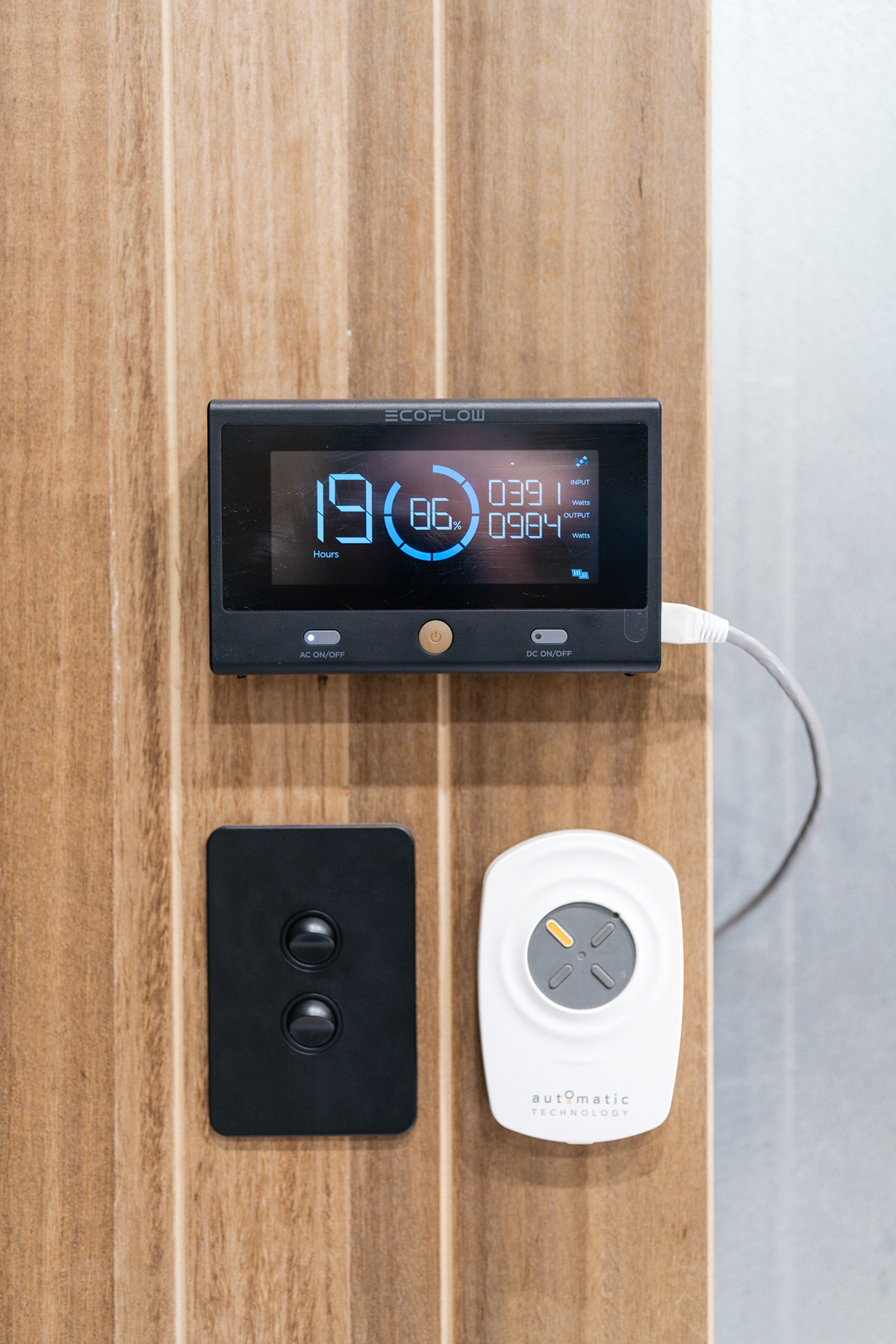
Building a Solar Test Rig
Instead of climbing onto the roof on day one, I started with a ground-mounted solar stand to test panel performance and angles. Using timber and a set of adjustable brackets, I built a large base to hold three 400 watt solar panels. It looks a little like a giant skateboard, slightly sketchy to move around, but very handy for testing.
[IMAGE: Timber frame solar stand with three panels mounted]
The panels are set up to face north, catching as much sun as possible across the day. They plug directly into the EcoFlow battery and the app shows real time solar input. On an overcast day, we were still seeing around 200 watts of charge coming in. When the sun broke through, that jumped to roughly 500 watts.
Even with mixed weather, the system has been topping up to 100 percent every day or every second day. I have been in and out of the shed constantly, lights on, tools running, chargers going, and the battery has not dropped below 50 percent.
Scaling Up the Solar
Three panels is a good start, but if I want to work in here for four to six hours a day, every day, with all the high bay lights on and tools going, I will need more.
The EcoFlow unit has two solar inputs:
- A high voltage input up to 1,600 watts at 30 to 150 volts
- A low voltage input up to 1,000 watts at 11 to 60 volts
Each panel sits around 37 to 40 volts. Wired in series, the voltage adds up, so three panels in series land right around the limit of that high voltage input. Then you can add more into the low voltage input.
I have eight panels available and plenty of roof space on the small garage next door. The long-term plan is to mount all eight panels on the roof, use both inputs, and let the system quietly top itself up every day. Even in the short test period with only three panels, the battery has kept up with how I use the shed so far.
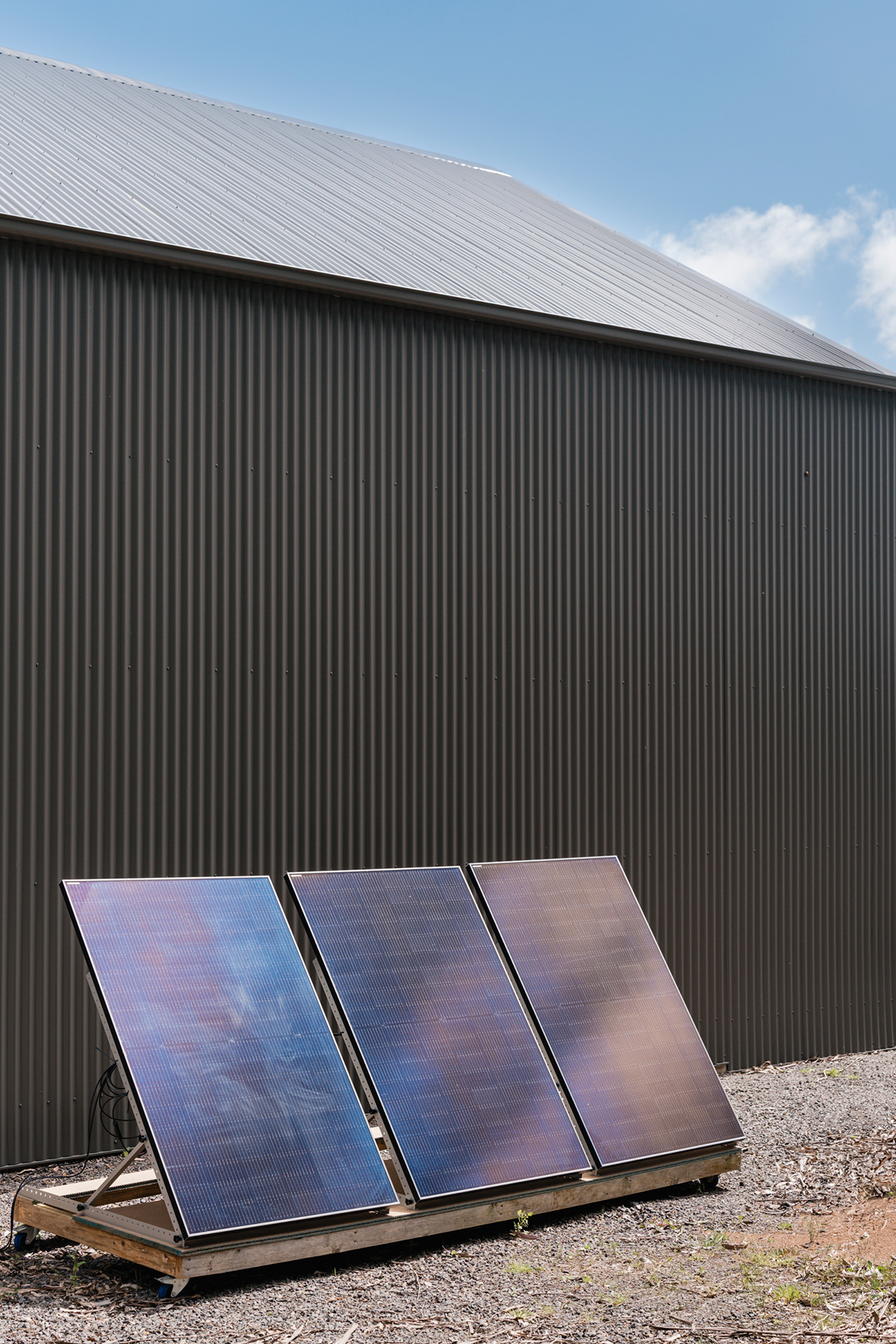
So, Can I Run It Off Grid?
For now, yes. For the way I am using the workshop at the moment, the battery and three-panel setup is enough to keep things going, with the occasional top up from mains when needed.
With eight panels mounted permanently and some more wiring tidied up, the goal is to run this entire building completely off-grid. Lights, roller doors, tools, chargers, everything.
There is still a lot to do. More storage to build. The mezzanine to construct. Offices to finish. Solar to be mounted properly on the roof. And eventually, a bigger system tied into the house.
What Is Next Inside the Workshop?
The next big move is to raid the old garage and bring all the tools in here permanently. More racking, better layout, and a proper home for everything.
Right now the bays are roughly split like this:
- Vehicle storage and surfboard rack in one section
- Working area in the middle with vacuum and pressure washer stations
- Future mezzanine and office zone in the third bay
There are plenty of jobs ahead, and plenty of space to grow into.




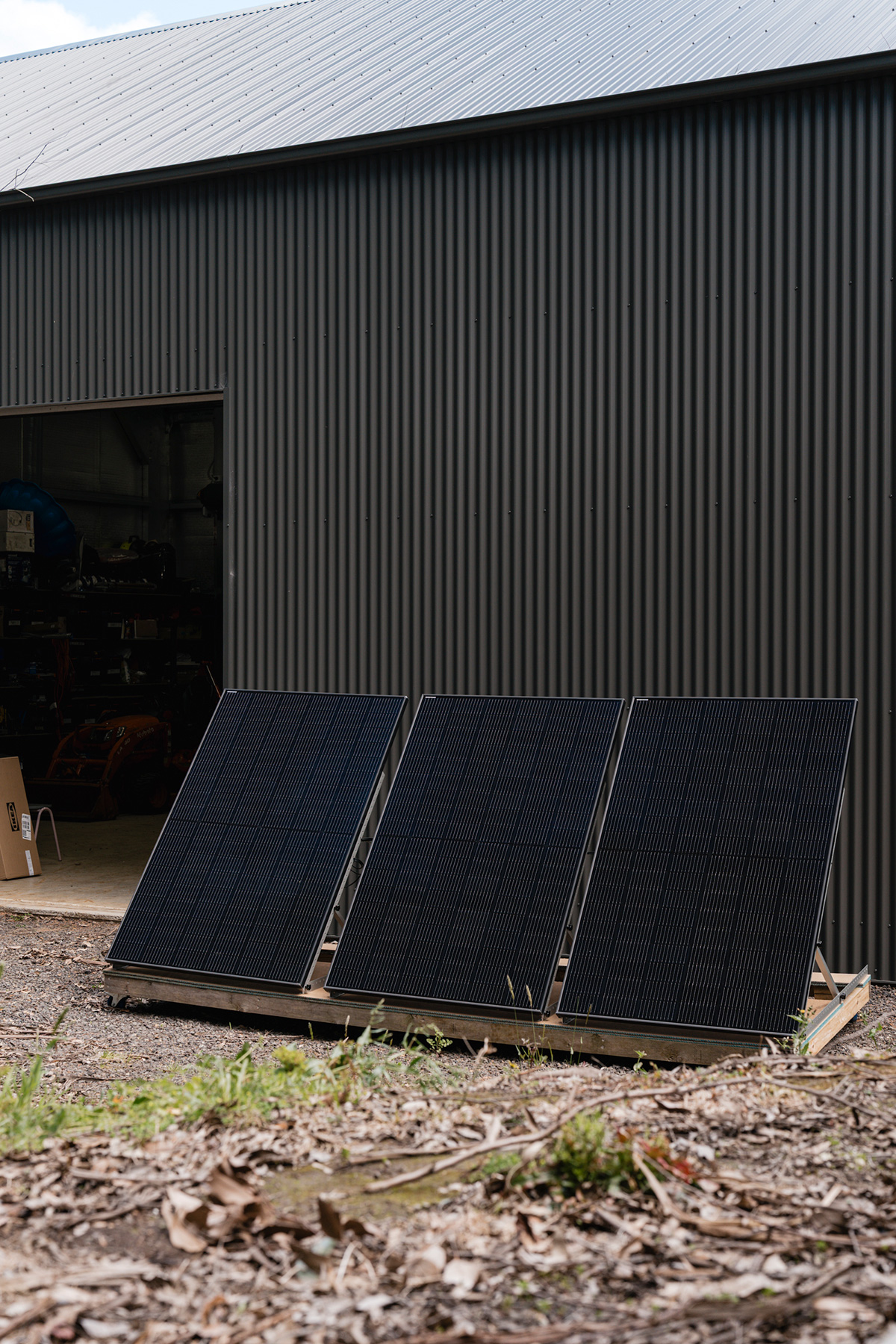 Off Grid Power: EcoFlow Delta Pro 3
Off Grid Power: EcoFlow Delta Pro 3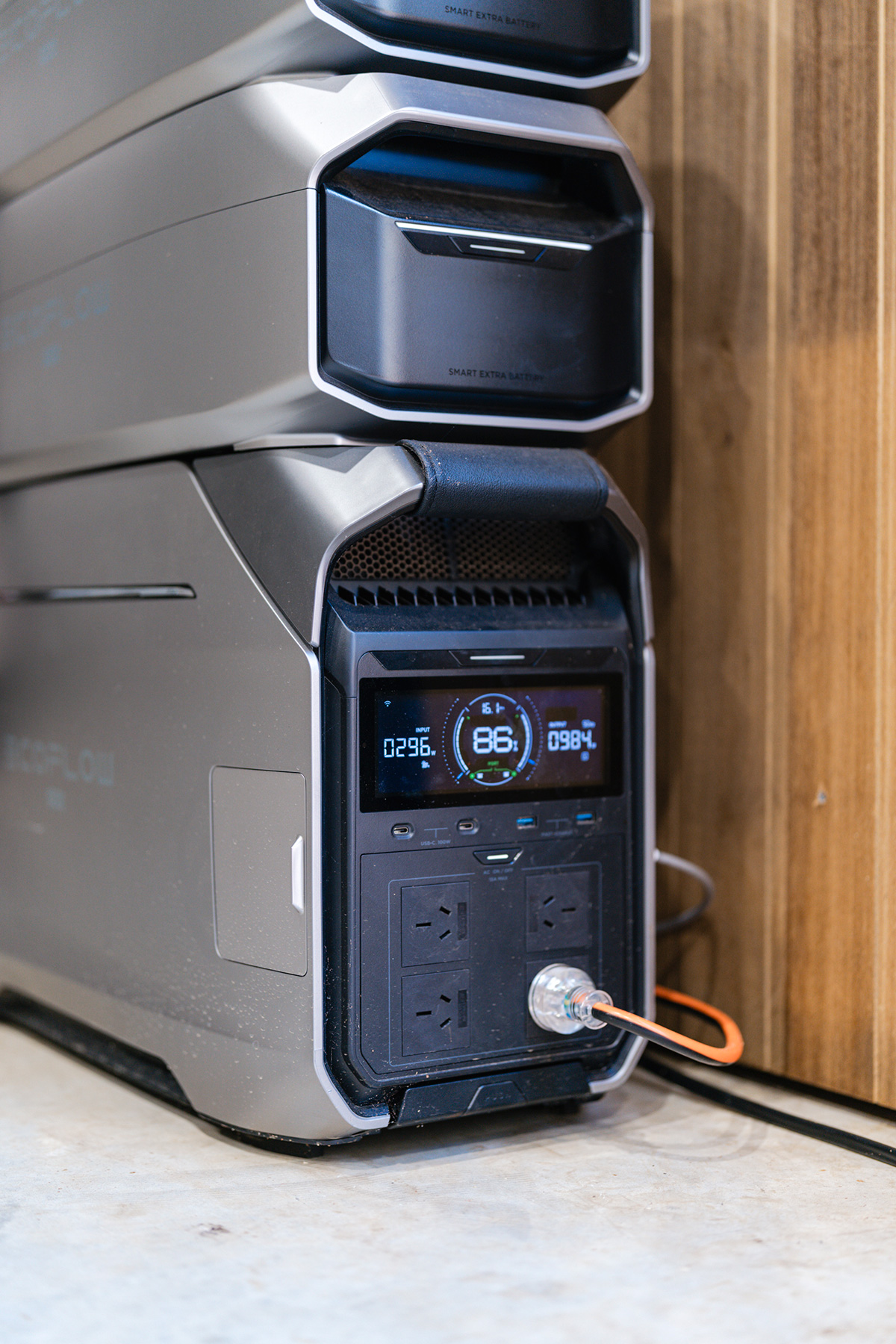 Can It Really Power a Whole Workshop?
Can It Really Power a Whole Workshop?

